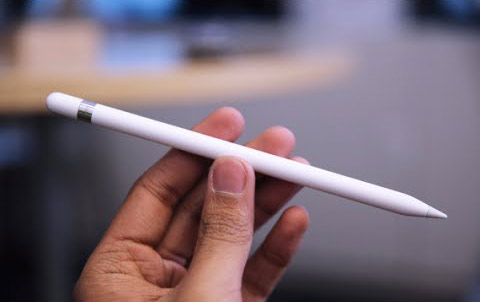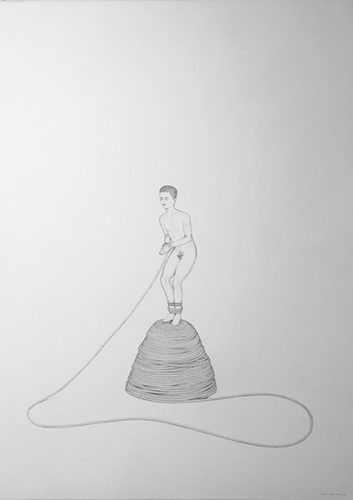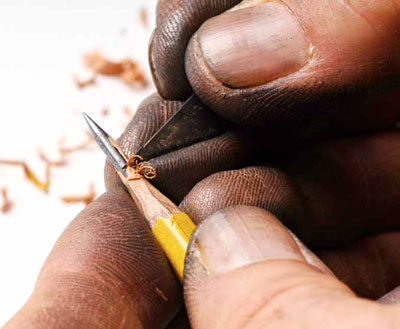
Seduction and The Senses
The new, virtual “pencil” at the Apple Store called to her like a siren on a rock.
It was a futuristic novelty – lean, elegant, white, weighted. With neither lead point nor eraser it also felt oddly mute, as if a real pencil were hermetically sealed inside.
The lean, elegant, white, genius from the Genius Bar hissed at her like a serpent from a tree, “ Come … try me out…”

When synched to the new, sketchpad-sized IPad, the pencil promised people like her what they’d long dreamed of: draw directly on the surface of their tablet. No muss no fuss, no extra baggage.
There already existed drawing tools on the market, less sensitive models with a maddening time lag. But the Apple pencil was designed, they said, to be so close to the real thing she’d barely notice the difference. And she wanted it the way one wants the final solution to all one’s problems, packaged in one, nifty, convenient gadget.
She thought, It all felt so… clean. No more giant stacks of aging paper prone to the ravages of mice, cockroaches, mold, water, time and fire. No more jars of drying markers and brushes, no more piles of point-less pencils, no more blackened hands and clothes. Nothing but two things to carry around: pad and pencil.
In addition there was the capacity to send, and above all, store thousands of drawings in a single slab — provided she had Wifi.
She wondered: How spontaneous can you be with it?
Well, the genius at the Genius Store said, first she’d have to download an app as usual, then she’d have to sign in, then she must choose from a string of icons – brush, pen, pencil, colors, etc. and synch it to the tool. Of course she also had to buy the new IPad Pro for it to work, and at a hundred bucks a pencil, she really didn’t want to forget it on the bus.
The clever thing did seem to respond to pressure and she could even turn it on its side to shade, almost like a real pencil.
And yet… and yet… it still felt a little bit like licking an ice cream through a sheet of Saran Wrap.
And, it made not a sound.
What was missing?
Something most artists don’t think to articulate, never asked about in interviews, the element that cannot add to the monetary value of their work: The full-sensory aspect of creating a thing.
It’s not about “process” and has nothing to do with the invisible grace that allows the hand to obey the mind’s eye.
 It’s about the feel, the fragrance, the sound of working materials.
It’s about the feel, the fragrance, the sound of working materials.
Engaged senses are a direct, private experience that evoke in the artist an intimacy, a satisfaction with the act that could challenge the best 3-D printer.
It’s in the tacky sound of pulling a print away from wet ink.
It’s in the shine or sponginess of the chosen paper.
It’s the click of the camera and, a long time ago, the blackness, red light, and sour chemical scent of the darkroom.
It’s the resistance and then surrender of the clay against the thumb and the stone against the chisel.
It’s the sudden give of melting metal, the velvet skin of the encaustic surface, the drunken reek of turpentine, the dry texture of sawdust and its woodland scent, the slide of the brush and the rich creaminess of the paint beneath it, the weight of the mallet, the whisper of a pencil leaving its mark.
Fully aware of having drunk the Apple-flavored Kool Aid, the woman confessed she still wanted that white pencil, and the big IPad, too, with the same excitement any new, unexplored medium evokes.
But for her, trading the senses for the gleam of successful technology was also Apple’s hidden failure.
The hypnotic urge of necessity had vanished. She can wait.



